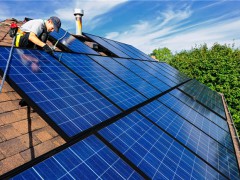據(jù)今日油價(jià)1月19日報(bào)道,EIA預(yù)計(jì),隨著需求持續(xù)增長,石油市場將出現(xiàn)供應(yīng)緊張,這種情況可能會(huì)推高油價(jià)。另一方面,歐佩克預(yù)測石油市場將趨于平衡,甚至因此提高了產(chǎn)量配額。
盡管提高了配額,但歐佩克一直在努力實(shí)現(xiàn)其產(chǎn)量目標(biāo),然而,這增加了油價(jià)上漲壓力。在開啟新一年之際,預(yù)測2022年石油市場走向的競賽正在進(jìn)行。牛市和熊市預(yù)測了兩條極其不同的道路,大家都認(rèn)為這將是大石油公司動(dòng)蕩不安的一年。一種觀點(diǎn)預(yù)測,隨著生產(chǎn)恢復(fù)正常,石油需求穩(wěn)定或減少,供應(yīng)將恢復(fù)。在這種情況下,可以期待油價(jià)的穩(wěn)定。另一種設(shè)想是,由于庫存保持低位,需求增長將繼續(xù)保持下去。
周二,美國能源信息署(EIA)將其油價(jià)展望提高了相當(dāng)大的5美元/桶。然而,根據(jù)能源信息和分析公司報(bào)告,EIA 認(rèn)為這些漲幅將在全年下降,因?yàn)槿蚬?yīng)最快將在第二季度超過需求。
然而,從長遠(yuǎn)來看,EIA預(yù)計(jì)石油需求將繼續(xù)增長,即使在全球領(lǐng)導(dǎo)人和環(huán)保人士日益迫切的呼吁下,全球推動(dòng)去碳化的力度繼續(xù)加大。EIA預(yù)計(jì),2022年全球石油需求將同比增加362萬桶/天,比上個(gè)月《短期能源展望》增加7萬桶/天。“如果這一預(yù)測成真,全球石油需求將最終超過2019年水平,這是自2020年最初幾個(gè)月開始疫情爆發(fā)以來的首次,將超過2019年的水平約26萬桶/天。”
歐佩克對2022年石油市場的預(yù)期甚至更加樂觀(從石油卡特爾的角度,而不是上述環(huán)保人士的角度)。全球石油需求將超過疫情前的高點(diǎn),達(dá)到每天1.01億桶,甚至在今年12月超過每天1.03億桶。然而,最終的預(yù)測純屬假設(shè),因?yàn)槿蚪?jīng)濟(jì)和地緣政治的波動(dòng)可能而且無疑會(huì)給工作帶來麻煩。
那些預(yù)測石油市場疲軟的人士指出,在今年冬天呼吁增加供應(yīng)量以應(yīng)對亞洲和歐洲遭受毀滅性打擊的能源緊缺之后,石油供應(yīng)過剩。然而,彭博社最近一篇評論文章對2022年石油市場疲軟預(yù)測提出了異議,因?yàn)檫@種展望假定,歐佩克+集團(tuán)19個(gè)有產(chǎn)出目標(biāo)的成員將實(shí)際以這些速度供油。但是目前并沒有做到,而且許多無法做到。 事實(shí)上,歐佩克已經(jīng)連續(xù)七個(gè)月沒有達(dá)到其產(chǎn)量配額。上個(gè)月,沒有實(shí)現(xiàn)62.5萬桶的集體目標(biāo)。
彭博社的文章認(rèn)為,這一差距不會(huì)很快縮小。事實(shí)上,除非歐佩克+聯(lián)盟中那些有余力的國家被允許彌補(bǔ)那些沒有余力國家的產(chǎn)量不足,否則供應(yīng)缺口將永遠(yuǎn)不會(huì)被彌補(bǔ)回來。“這似乎不太可能。" 這一斷言可能有些夸張,考慮到全世界對發(fā)展更清潔和可再生能源強(qiáng)有力的推動(dòng)。
可以肯定的是,世界繼續(xù)依賴化石燃料來實(shí)現(xiàn)其最基本的功能,而且發(fā)展中國家的需求將不可避免地繼續(xù)快速增長。然而,能源市場正在發(fā)生協(xié)調(diào)一致的巨大變化,化石燃料的主導(dǎo)地位將不會(huì)繼續(xù)受到挑戰(zhàn)。然而,在2022年,石油需求將繼續(xù)擴(kuò)大,而石油價(jià)格可能會(huì)隨之不斷飆升。
王佳晶 摘譯自 今日油價(jià)
原文如下:
Will Oil Markets Finally Find Balance In 2022?
The EIA is expecting a supply crunch in oil markets as demand continues to grow, a scenario which could push oil prices higher.
OPEC, on the other hand, is predicting a more balanced oil market, even raising output quotas as a result.
Despite raising quotas, OPEC has struggled to meet its production marks, however, adding upward pressure to oil prices.
As we kick off the new year, the race is on to predict the course that the oil market will take in 2022. The bulls and the bears are predicting two extremely divergent paths for what all agree is going to be a tumultuous year for Big Oil. One vision predicts that supply will recover as production returns to business as usual, and oil demand steadies or decreases. In this scenario, we can look forward to stabilized oil prices. The other vision is that demand growth will keep on keeping on as stockpiles remain low.
On Tuesday, the US Energy Information Administration (EIA) increased its oil price outlook by a considerable $5 per barrel. However, true to the tumultuous shape the year is already taking, the EIA “sees those levels falling throughout the year as global supply outpaces demand as soon as the second quarter” according to reporting from energy information and analytics company S&P Global Platts.
In the long term, however, the EIA is expecting oil demand to keep growing, even as the global push for decarbonization continues to gain traction amidst increasingly urgent calls from global leaders and environmentalists. “The EIA expects global oil demand to increase 3.62 million [barrels a day] year on year in 2022, up 70,000 [barrels a day] from last month's Short-Term Energy Outlook.” If this projection comes to pass, global oil demand would finally top 2019 levels for the first time since the pandemic began in the early months of 2020, topping those numbers by approximately 260,000 barrels a day.
OPEC’s expectations for the 2022 oil market is even more optimistic (from an oil cartel’s point of view, not so much the aforementioned environmentalists). Their base case sees global oil demand topping pre-pandemic highs to the tune of 101 million barrels a day, and even surpassing 103 million barrels a day in December of this year. Projections and predictions, however, are purely hypothetical at the end of the day – and the volatility of global economics and geopolitics can and undoubtedly will throw a wrench or 20 into the works.
Those who are predicting a weak oil market point to surplus oil supplies, in the wake of increased production rates on the heels of this winter’s pleas for increased pumping to combat the energy crunch hitting Asia and Europe in devastating waves. A recent opinion column from Bloomberg, however, takes issue with projections of a weak oil market in 2022, because this outlook “assumes that the 19 members of the OPEC+ group who have output targets will actually pump at those rates. But they aren’t, and many of them can’t.” In fact, OPEC has fallen short of its production market for seven consecutive months. Last month, it missed its collective target by 625,000 barrels a day.
“That gap’s not going to close any time soon,” the Bloomberg article contends. “In fact, the deficit won’t ever be recouped unless those in the group with spare capacity are allowed to make up the production shortfalls of those without. This seems unlikely.” This assertion is likely hyperbolic, especially on any kind of extended guidelines, considering the very real push for the development of cleaner and renewable energy resources worldwide.
To be sure, the world continues to rely on fossil fuels for its most basic functions, and demand will inevitably continue to grow at a rapid clip in developing countries. However, there is a concerted sea change taking place in energy markets, and the dominance of fossil fuels will not remain unchallenged. In 2022, however, oil demand is set to keep expanding, and oil prices are likely going to keep soaring right along with it.
免責(zé)聲明:本網(wǎng)轉(zhuǎn)載自其它媒體的文章,目的在于弘揚(yáng)石化精神,傳遞更多石化信息,并不代表本網(wǎng)贊同其觀點(diǎn)和對其真實(shí)性負(fù)責(zé),在此我們謹(jǐn)向原作者和原媒體致以敬意。如果您認(rèn)為本站文章侵犯了您的版權(quán),請與我們聯(lián)系,我們將第一時(shí)間刪除。







